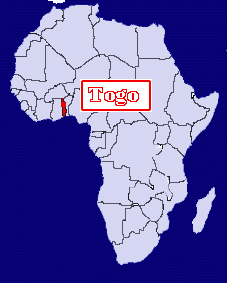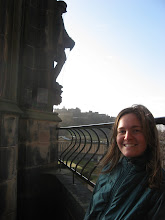Hey everyone! I just returned from an amazing spring break trip to Peru, located just south of Ecuador. My 4 friends and I from the university stayed for 3 days in Cusco, once capital city of the Incan civilization and made a 4 day trek to Machu Picchu, visiting villages, seeing amazing sites, and getting to know the llamas who carried our packs. I put up a whole bunch of pictures on webshots, so please go to the webshots site and do a search for: KatieKoralesky, and you can see my pictures!
Cusco:
Because of it's location, Cusco was known as the center of the world, which is what the word literally means. Today, though there remains churches built during the Spanish colonization and the Incan foundations of the characteristic carved rocks for walls, the town is full of tourists, and the city is made up of restaurants, camping shops, and internet cafes. One alley is called "Gringo alley" (Gringo is a foreigner, an American usually) where you encounter menu after menu being shoved in your face. We encountered many people from the states, but also from the Netherlands, France, and Canada. The flag of Cusco is almost identical to the Gay pride flag, that of a rainbow. This is because the Incans worshiped many aspects of nature, the rainbow being one of them.
We were able to see a number of processions for the holy week, including one of Good Friday which included somber music played by the military band and the carrying of a statue of the Virgin Mary to a church. Easter Sunday included a parade of the military, and also the university and some primary and secondary schools of Cusco. The raising of both the Peruvian flag (red and white) and the Cusqueñan flag (stripes of the rainbow) were raised, and though the ceremony was pretty intense, this didnt' stop vendors from selling Peruvian snacks like jello in a cup, crunchy but sweet noodle like crackers, fried chips and ice cream. Overall, Peruvian food is similar to that of Ecuadorian; potatoes and rice are a staple, though Alpaca meat (an animal similar to a llama, characteristic of the Andes region) is often served (I didn't the chance to try-apparently it's a bit like beef).
Cusco, because of the constant arrival of tourists, offers many restuarants offering whatever you like, but tend to be more expensive (maybe 5 to 8 dollars a meal, which is pricy here). My friends and I were lucky to find a great Chinese restaurant (there are a lot in Cusco actually, as there has always been a good number of Chinese immigrants) and an Israeli restaurant that offered soup, falafel plates, a juice called "limonana," a mint infused limeade and desert all for 9 soles, about 3 dollars. (When we arrived, 2.75 soles were equal to 1 American dollar, a week later, 2.7 soles to 1 American dollar)
Cusco is the place to see archaeological ruins in South America. We saw many Incan ruins, temples, water structues/irrigation just 40 minutes outside of Cusco. The characteristic, perfectly fit together smooth rocks you probably know were only made when constructing temples (to the Sun god, or to one of 3 important animals, the Condor (sky) the Puma (land) and the snake (underground). These smooth paved rocks and double doorways were made for royalty also. The Incans did make sacrifices, but not in such cruel manners as the Mayans or Aztecs of Mexico; as sometimes the losers of sporting events were sacrificed. The Incans sacrificed a llama every single day, which were then burned. They sometimes sacrified young girls, 12-15, when a natural disaster or something like a volcano eruptiong happened, in order to appease the Gods.
Lares Llama Trek:
Much of the information I learned about the Incan civilization and about Peru was from our awesome guide, Cynthia, during out trek. The Incans finally conquered the rest of small tribes of Peru in the 1400's, but the Incans themselves were soon conquered after the Spanish arrival in the 1530's. Many of the communities we saw on our trek only speak Quichua, the language of the Incas, which until Spanish arrival only existed orally, not in written form. This is why most of the information about the Incans exists because of Spanish accounts, from a Spanish point of view. Some of the communities we saw were very small, and nearly all the people are farmers, mostly potatoes and the coca leaf. Every morning with our breakfast we had coca leaf tea, which consists of adding coca leaves with hot water. The taste is simple, but helps with altitude sickness, to evade hunger, and has been used since the Incan time for medicinal purposes. The United States prohibits the coca leaf from being imported, because from the coca leaf cocaine is made. To Peruvian, Bolivian and Ecuadorian people, the coca leaf is not a drug, as they have used it for centuries for numerous things, not drugs. The Incans even offered it as a gift to la Pacha Mama, Mother Earth. Many t-shirts for sale present a huge picture of the coca leaf and say "La hoja de coca no es droga" which means in Spanish, "The coca leaf is not a drug."
The trek was amazing; one of the most amazing ways to see Peru. We never got sick of the valleys and Andes mountains that we traveled through. There was not shortage of llamas and alpacas grazing either; they are perfectly suited for a chilly mountain climate. The llamas that carried our things were shy, but extremely well handeled and trained by their llama handler, named Raymundo. The rest of the people on our trek were 2 horse handlers (there was an "emergency horse" for any of us who felt sick or lightheaded) and also the cook, Benancio, who made the most amazing food on the trek (the horses carried along a small gas tank)
Machu Picchu:
Finally, we arrived at Machu Picchu. It is known as the lost city of the Incas because the Spanish wrote no accounts of it, and after Incans travelled there, they were told not to tell anyone. Hiram Bingham, Yale professor, actaully discovered it by mistake in the early 1900's. It was a temple, a village where people lived and also an agricultural region, as the Incans used terraces the grow potatoes and the coca leaf. These ancient terraces are everywhere around Cusco, literally. Machu Picchu was much bigger than I thought, we stayed at the site for 6 hours, 2 or which were climbing "Huaya Picchu", the big tall mountain behind Machu Picchu. At first glance, Huaya Picchu (meaning "young mountain", Machu Picchu meaning "old mountain") looked very steep, but up close, not so bad. There are these very thin slippery steps that lead to the top, where there are some more ruins, and huge rocks at the top. There is a limit to 400 people to climb everyday, and you must sign out when you go the climb and sign back in when you return. We wondered what would happen if at the end of the day, a signature was missing. Our guide told us that more than 3,000 people visit Machu Picchu every day. Because the moutain itself and Machu Picchu have been sliding down at a rate of 1 cm a month, the Cultural Institute of Peru wants to put a limit of 2,000 visitors each day. Even though I had seen pictures of Machu Picchu before, it's really amazing to see the clouds break and reveal the lost city.
Sunday, March 30, 2008
Subscribe to:
Post Comments (Atom)



1 comment:
HI Katie,
Great pictures and update! Feel like I am watching animal planet/travel channel...I can't believe how much food he cooked for you all..and it looked so good! Um...I am glad I knew you climbed that high young mountain after the fact...like those skinny steps have no handrails! Love the llamas....I get that they are sorta shy...but who did llama cleanup? love, MOM
Post a Comment